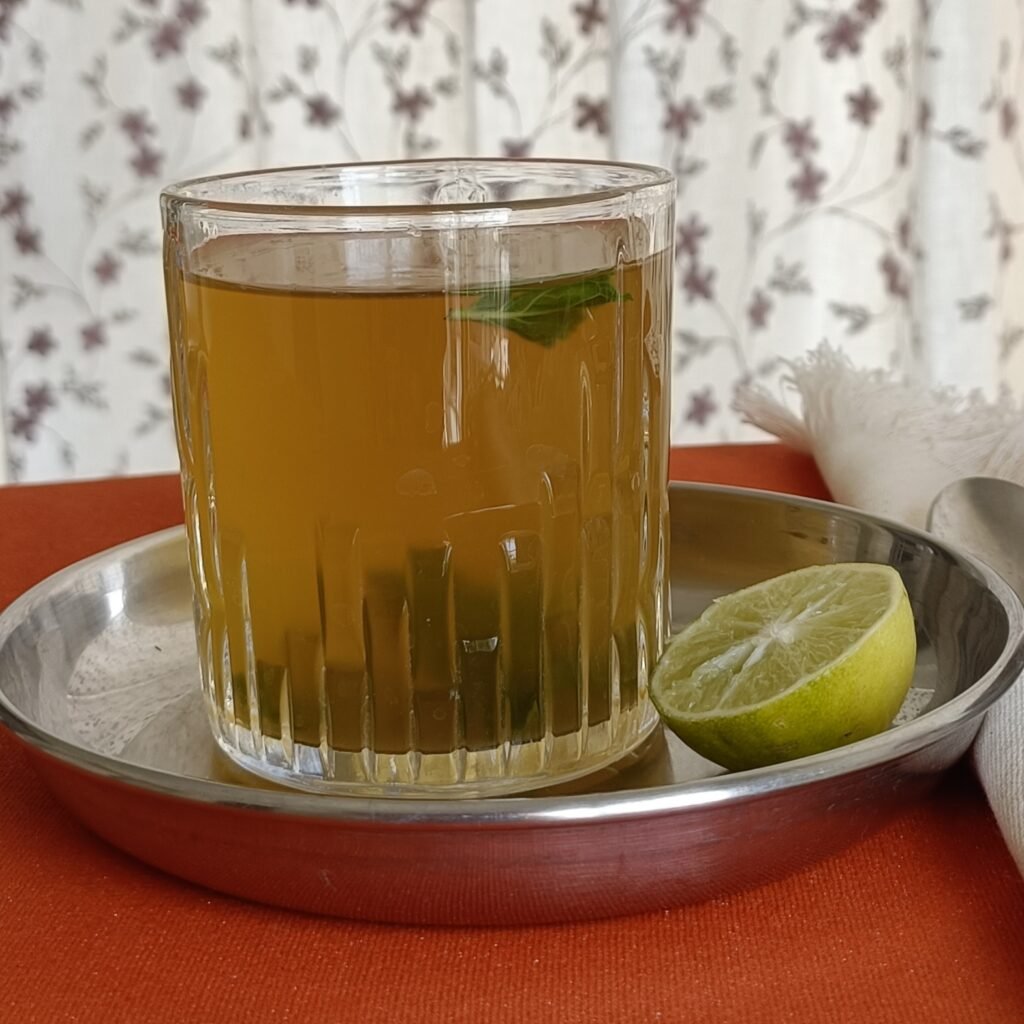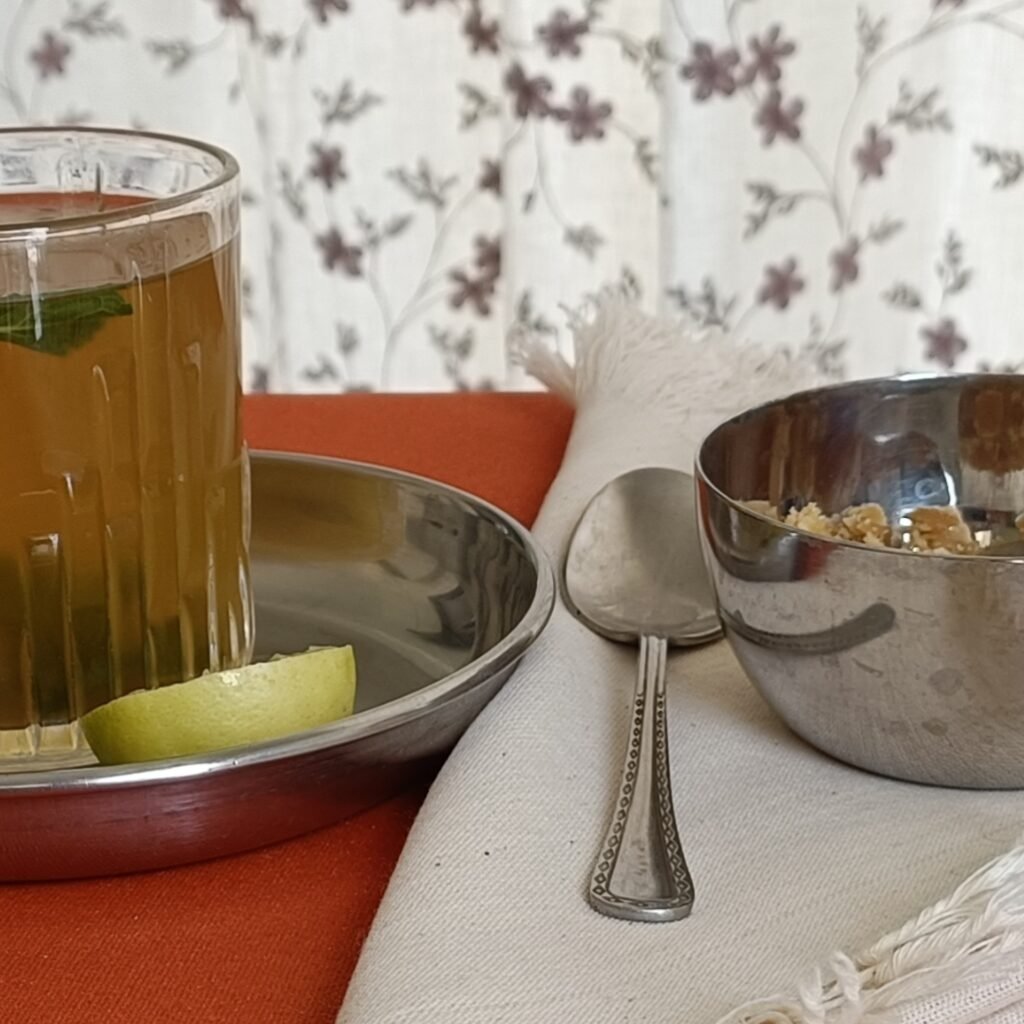Tea and coffee mixed with milk and sugar can so easily be replaced with home-made herbal teas. Kadhas have been part of Indian cuisine for ages and each household had their own special recipes. Check out this infusion and use your creativity to come up with your own combinations — all from Mother Nature’s offerings!
Recipe credit: Darshana Muzumdar
Serves 2
Ingredients
- 2 tsps crushed/chopped/grated ginger (there’s no need to peel it)
- 20-30 mint leaves
- 3-4 crushed black pepper corns
- 1-2 lemon grass leaves
Method
- Bring 2 cups of water and the crushed/chopped/grated ginger to a boil. Simmer for a minute or so. You can even allow the ginger to simply seep in boiled water by bringing the water to a boil, turning off the heat and adding the ginger.
- Turn off the heat and add any or all of the other ingredients that you would like to infuse.
- Cover and let the herbs seep for three to five minutes. Strain and serve warm with lemon and some jaggery for sweetening. This warm drink is soothing to the throat and warms you up from inside especially if had without any jaggery.
NOTE: This infusion can be made in a large quantity and preserved in the fridge for three or four days and had cold or you can gently warm it up if desired.
The combinations are many and will take a little bit of experimenting to create an infusion you love, so go ahead and have some fun. Some other herbs that you can experiment with are cinnamon, cloves and cardamom.



Share this:
- Click to share on Facebook (Opens in new window)
- Click to share on WhatsApp (Opens in new window)
- Click to share on Twitter (Opens in new window)
- Click to share on Pinterest (Opens in new window)
- Click to share on LinkedIn (Opens in new window)
- Click to share on Reddit (Opens in new window)
- Click to share on Tumblr (Opens in new window)
- Click to share on Pocket (Opens in new window)
- Click to share on Telegram (Opens in new window)
- Click to print (Opens in new window)

